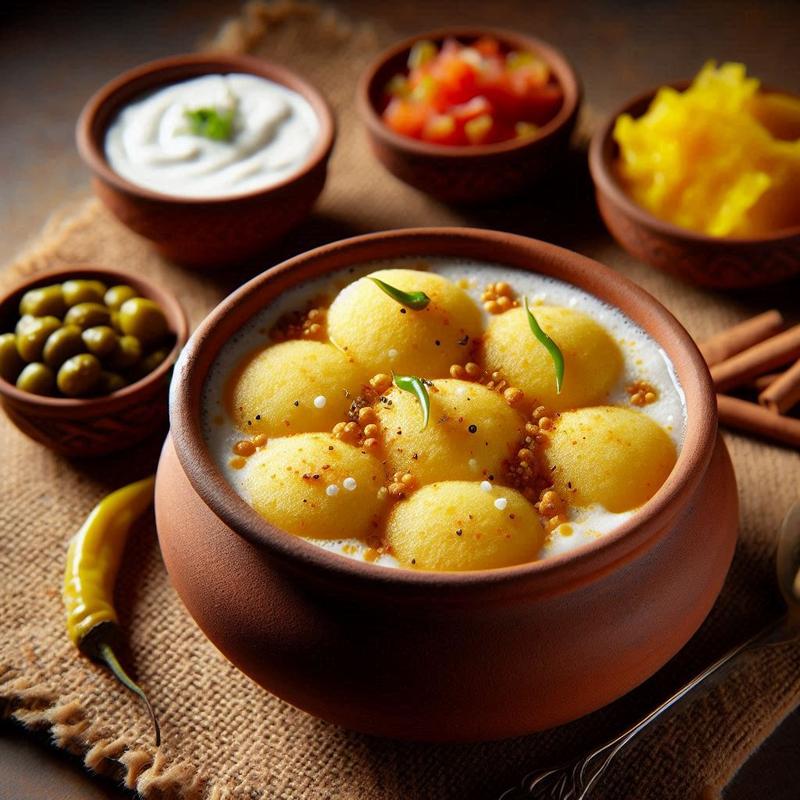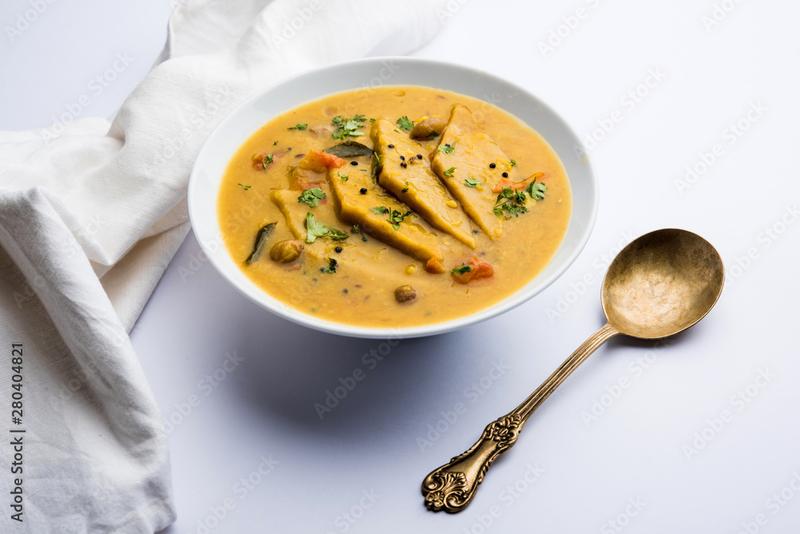Dal Dhokli: A Classic Gujarati Comfort Food#
Introduction#
Welcome to AllBlogs, your premier destination for exploring diverse food blogs, travel experiences, tech insights, and lifestyle tips. Today, we delve into the heart of Gujarati cuisine with Dal Dhokli, a dish that epitomizes comfort food in Gujarat. Known for its wholesome ingredients and heartwarming taste, Dal Dhokli is a beloved dish that has graced many a Gujarati table. Join us as we uncover its history, share the recipe, and tell some fun stories that make Dal Dhokli a timeless favorite.¶
The Origin of Dal Dhokli#
Dal Dhokli is a traditional Gujarati dish that combines spicy lentil soup (dal) with wheat flour noodles (dhokli). Its origins are rooted in the necessity of creating a wholesome and filling meal using simple ingredients. The dish is believed to have been created by farmers who needed a nourishing meal that could sustain them through a long day of work. Over time, it has evolved into a beloved comfort food enjoyed by Gujaratis across the world.¶
The Perfect Comfort Food#
Dal Dhokli is often enjoyed as a hearty meal during the cooler months, but its comforting qualities make it a year-round favorite. The combination of lentils and wheat flour provides a balanced meal that is both nutritious and satisfying. It is typically served with a side of rice or eaten on its own as a complete meal.¶

Recipe: How to Make Dal Dhokli#
Ingredients:#
For the Dal:¶
- 1 cup Toor Dal (split pigeon peas)
- 2 tbsp Peanuts
- 1 tsp Turmeric powder
- 2 tsp Red chili powder
- 1 tsp Garam masala
- 1 tsp Mustard seeds
- 1 tsp Cumin seeds
- 2 Green chilies, slit
- 1 inch Ginger, grated
- 2 Tomatoes, chopped
- 1 tsp Jaggery or Sugar
- 2 tbsp Lemon juice
- Salt to taste
- Fresh coriander leaves, chopped
- Water as needed
For the Dhokli:¶
- 1 cup Whole wheat flour
- 2 tbsp Besan (gram flour)
- 1 tsp Turmeric powder
- 1 tsp Red chili powder
- 1 tsp Ajwain (carom seeds)
- 2 tbsp Oil
- Salt to taste
- Water as needed
Method:#
Prepare the Dal:¶
- Wash the toor dal thoroughly and soak it in water for about 30 minutes. Drain and transfer it to a pressure cooker along with peanuts, turmeric powder, and enough water to cook. Pressure cook for 3-4 whistles or until the dal is soft and mushy.
- Once the dal is cooked, whisk it to a smooth consistency and set aside.
- In a large pot, heat oil and add mustard seeds. Once they splutter, add cumin seeds, green chilies, and grated ginger. Sauté for a minute.
- Add chopped tomatoes and cook until they turn soft and mushy.
- Add red chili powder, garam masala, jaggery, and salt. Mix well and cook for another 2 minutes.
- Add the cooked dal to the pot along with some water to adjust the consistency. Let it simmer on low heat while you prepare the dhokli.
Prepare the Dhokli:¶
- In a mixing bowl, combine whole wheat flour, besan, turmeric powder, red chili powder, ajwain, salt, and oil. Mix well.
- Gradually add water to form a stiff dough. Knead well and let it rest for 10 minutes.
- Divide the dough into small portions and roll each portion into a thin circle (about 1-2 mm thick).
- Cut the rolled dough into diamond or square shapes using a knife.
Combine and Cook:¶
- Slowly add the cut dhokli pieces into the simmering dal, stirring gently to prevent them from sticking together.
- Cook the dal and dhokli together for about 15-20 minutes, or until the dhokli pieces are cooked through and soft.
- Add lemon juice and fresh coriander leaves. Adjust seasoning if needed.

Cultural Significance and Anecdotes#
Festivals and Celebrations#
Dal Dhokli is more than just a meal; it is a tradition. It is often prepared during special occasions like Uttarayan (the kite festival) and during the monsoon season when the hearty dish provides warmth and comfort.¶
Traditional Rituals#
In many Gujarati households, Dal Dhokli is a Sunday tradition. Families gather around to enjoy this comforting dish, making it a symbol of togetherness and love. The process of making Dal Dhokli is often a family affair, with each member contributing to its preparation.¶
Local Favorites#
In cities like Ahmedabad (અમદાવાદ), Surat (સુરત), and Vadodara (વડોદરા), local eateries have their unique takes on Dal Dhokli. ‘Swati Snacks’ in Ahmedabad is renowned for its traditional yet innovative version of Dal Dhokli, while ‘Sasuji’ in Vadodara offers a home-style preparation that is a favorite among locals.¶
Best Season to Enjoy Dal Dhokli#
While Dal Dhokli can be enjoyed throughout the year, it is particularly popular during the monsoon and winter seasons. The warmth of the dish is perfect for rainy days or chilly evenings, providing a sense of comfort and coziness.¶
Fun and Interesting Stories#
The Tale of the Dal Dhokli Lover#
There’s a charming story about an elderly gentleman in Rajkot (રાજકોટ) named Bapuji who would insist on having Dal Dhokli every Sunday. His grandchildren, eager to learn the family recipe, would gather around him as he shared tales of how his mother used to make the best Dal Dhokli in their village. For Bapuji, Dal Dhokli was not just a dish but a cherished memory of his childhood.¶
The Dal Dhokli Cook-Off#
In a small town in Gujarat, there’s an annual Dal Dhokli cook-off held during Uttarayan. Families compete to make the best version of this classic dish, with prizes awarded for taste, presentation, and creativity. The event is a beloved tradition, bringing the community together in celebration of their culinary heritage.¶
Conclusion#
Dal Dhokli is not just a dish; it's a celebration of Gujarati culture and tradition. Its rich history, comforting flavors, and the stories that accompany it make Dal Dhokli a beloved favorite. We hope this detailed blog on AllBlogs has inspired you to try making Dal Dhokli at home and appreciate the cultural heritage it represents.¶
Stay tuned to AllBlogs for more exciting food blogs, travel tips, tech insights, and lifestyle stories. Happy cooking!¶














